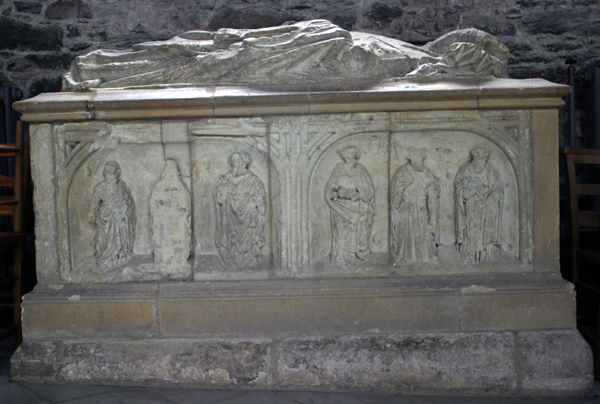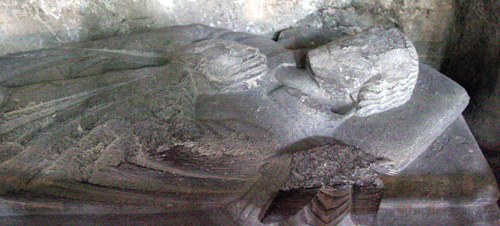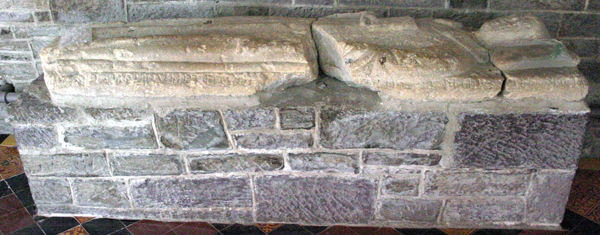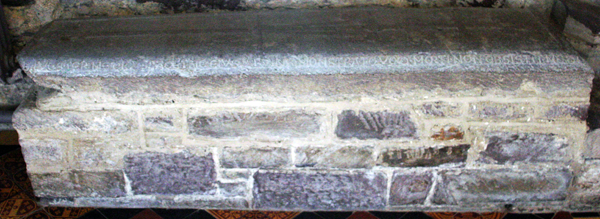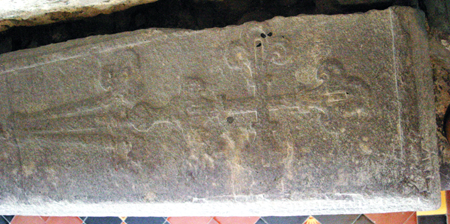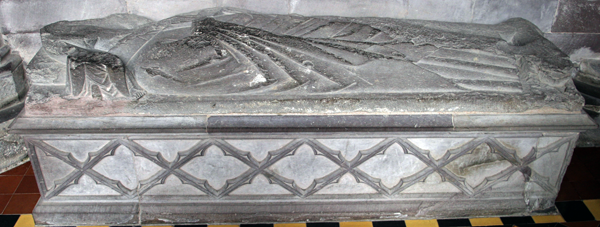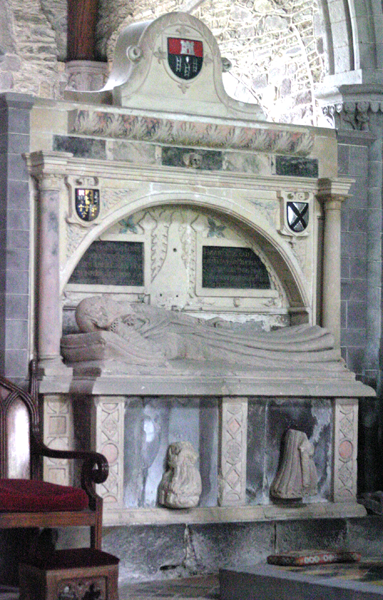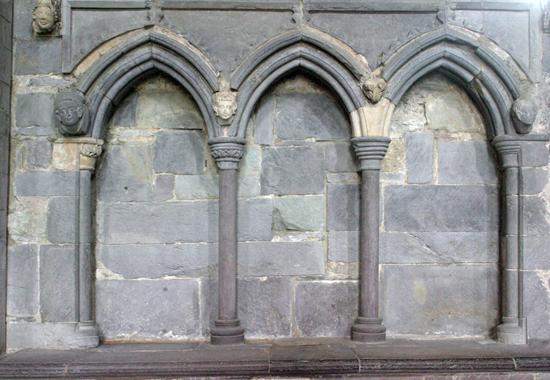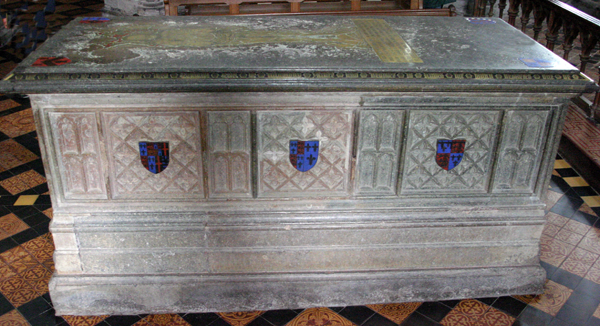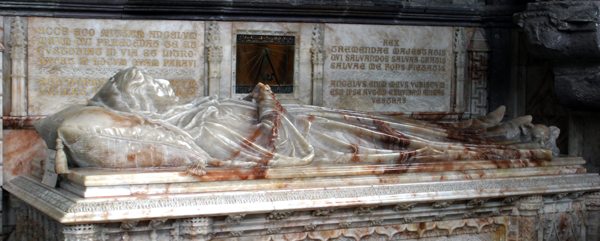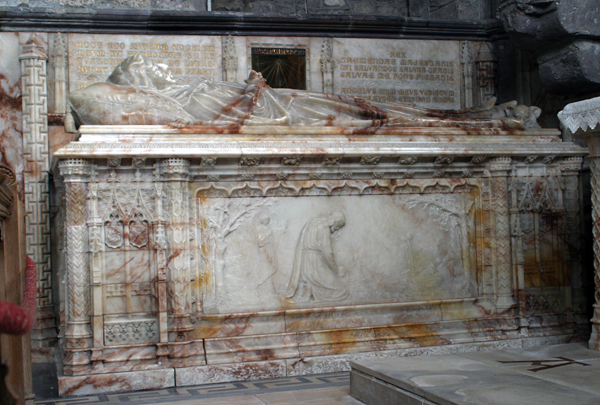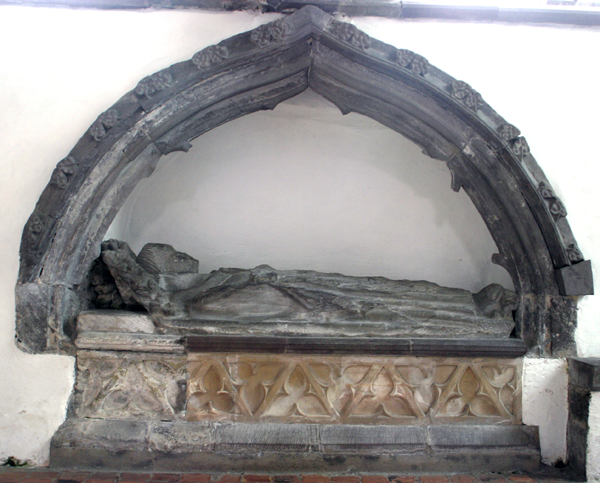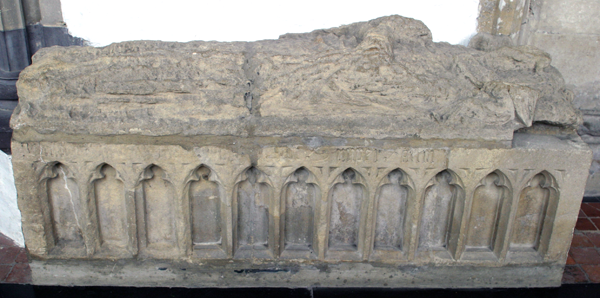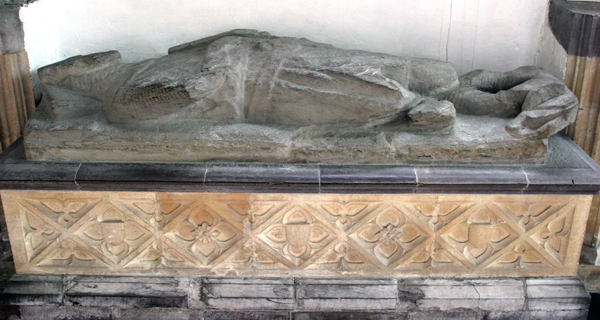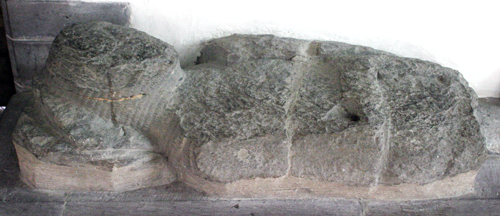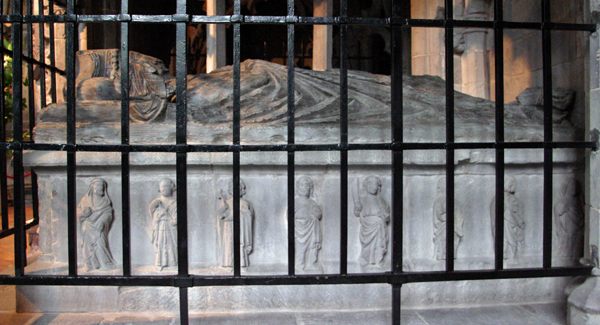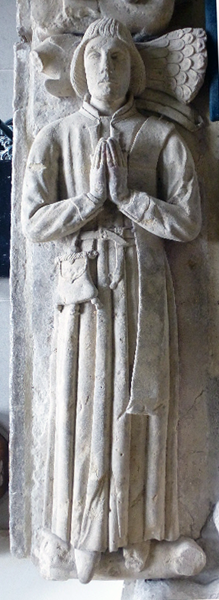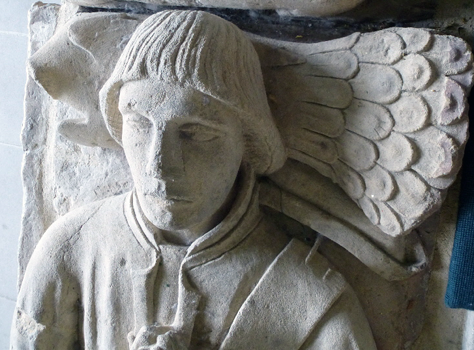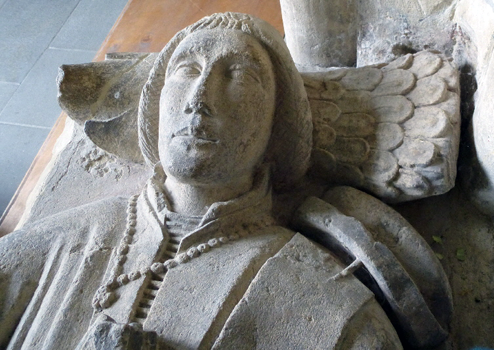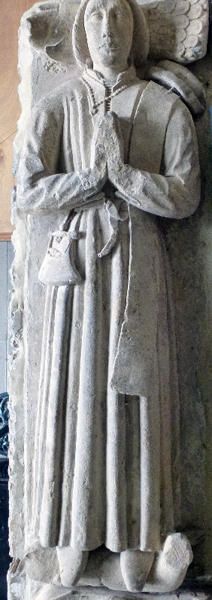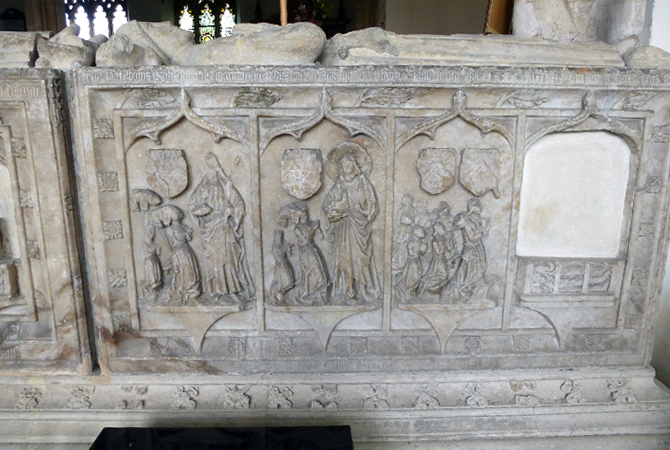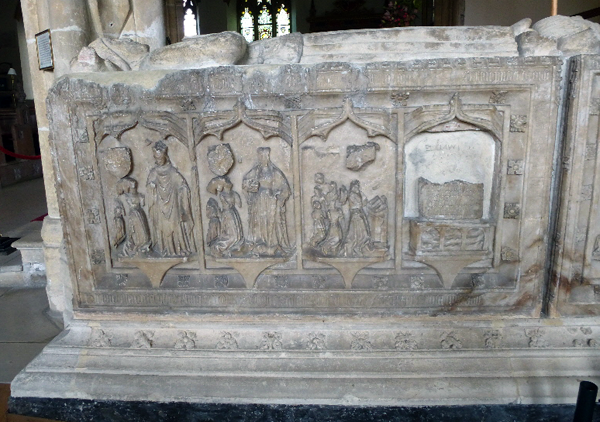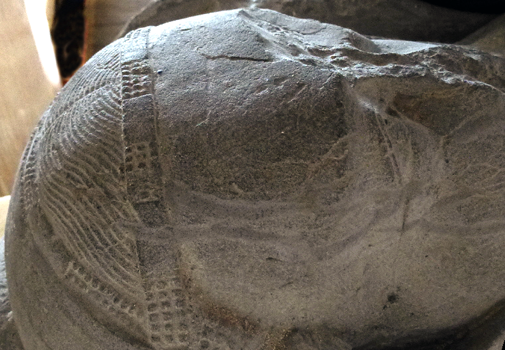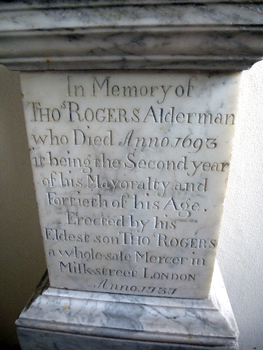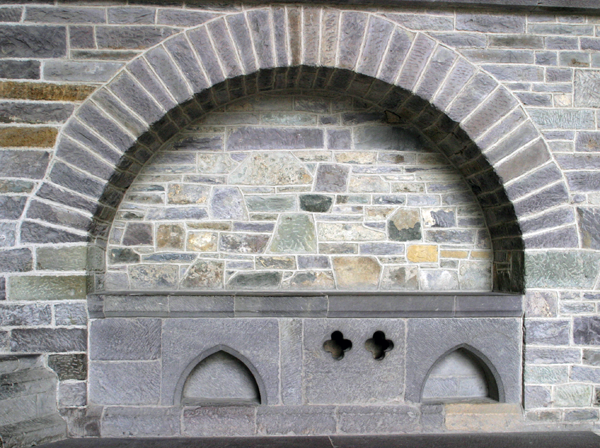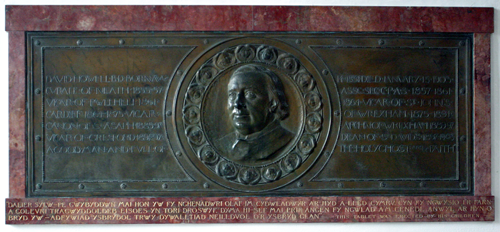| The Tudors
Begin |
Things were going well for King Henry V: his campaigning in France
and his victory over the French at battle of Agincourt were
bringing results. He was now master of over a third of France
and at Troyes, in north central France, the English and French
signed a treaty to bring the Hundred Years' War to an end,
unsuccessfully as it turned out. The terms of the treaty stated
that the French King, Charles VI, was to remain king until his
death but then Henry was to succeed him or, if Henry were to die
before the French King, any son of Henry would similarly succeed
to the
French throne. The French King's son, the Dauphin Charles was thus
disinherited from the crown of France. Furthermore by the terms of
the Treaty of Troyes King Henry was to marry King Charles's
daughter, the young and attractive Catherine of Valois.
All this was not entirely due to Henry's military and diplomatic
skills: the French king suffered from bouts of insanity and was
unable to govern the county. Two factions , the Armagnacs and
the Burgundians, had emerged on who would govern France during
the King's mental incapacity and this led to a bitter
civil war lasting twenty eight years. Thus Henry had invaded a
divided country and the English allied themselves with the
Burgundian faction. This alliance was to the advantage of
the Burgundians as well as the English as the Dukes of Burgundy also held the Low Counties
(Flanders) to where England exported wool, its main source of income at the
time.
Things certainly were indeed going well for Henry: he was young and fit
while the French King was twenty years older and insane.
Henry and Catherine were married in France, probably at the
Cathedral of Troyes, and returned to England for
Catherine's coronation. Henry then returned to France to
continue his campaigning in the areas which were not yet under
English and Burgundian control, leaving Catherine, by now
pregnant, behind in England. While Henry was in France Catherine gave birth to a son, who was named after his
English father and grandfather.
But then Henry's luck ran out. He died in France, probably from
dysentery, not uncommon in medieval campaigns. He was thirty-five
and his son, whom he had never seen, was only a few months old.
Shortly afterwards Charles VI himself died so a six months old
baby succeeded to both the French and English thrones. And not
all of France was under the control of the Anglo-French child
king. However that story will be continued elsewhere: we will
now look at what happened to Catherine, now the Dowager Queen.
Queen Catherine remained in England in charge of her son,
King Henry VI, who was not yet one year old. The Regency Council was
concerned , as Catherine was young and
attractive, about her possible remarriage. However Parliament
passed a law stating that if a widowed queen were to marry again
without the ruling king's consent then her husband would lose all his
property and possessions, although this law would not
disadvantage any of their future children. As the King was only
seven years of age at this time he could hardly give consent
anyway and any permission would probably require the consent of
the Regency Council.
Catherine began a relationship with a Welsh knight, Owen Tudor
(Owen ap Maredudd ap Tudur), who was probably a member of her
house hold. They had at least six children together although it
is in doubt whether they actually ever married and, even if they
had the law about re-marriage would have affected them. Two of
the children interest us here, Edmund and Jasper Tudor. It is
also possible that Catherine had had a pervious relationship
with Edmund Beaufort, 2nd Duke of Somerset, and that he may have
been
the father of Edmund Tudor. This alleged affair led to
parliament passing the law about future queens' remarriage,
mentioned above. This Duke of Somerset was one of the powerful
Beauforts who will be mentioned in more detail shortly. If this indeed were the
case then Henry VII would have been descended from the Beauforts
on both
sides of his family.
Catherine died in 1435 and things went badly for her son, Henry VI: he
was not really fit to rule, at first because he was a child and
then as an adult because he suffered from some form of mental
incapacity. This led to two factions - the Lancastrians and the
Yorkists - vying for power and the control of the King. The so
called Wars of the Roses had begun. History had repeated itself
as well as crossing the channel. Owen Tudor, who was naturally
on the Lancastrian side, was an early casualty of these wars,
having been beheaded at sixty-one after a Yorkist victory at the
Battle of Mortimer's Cross.
Henry VI granted Edmund Tudor the Earldom of Richmond and his brother Jasper the
Earldom of Pembroke. The King also arranged the marriage of
Edmund to the eventually much married twelve year old Lady Margaret
Beaufort. This was her second marriage: she had been married at
three to the dolittle timeserver, John de la Pole, 2nd Duke of
Suffolk, who was later to marry a sister of Kind Edward IV.
Before this marriage was dissolved she married Edmund Tudor.
However Edmund was arrested by the Yorkists and imprisoned
where he died of bubonic plague at 35. The thirteen year old
Margaret was pregnant with the future Henry of Richmond. This
was her first and only pregnancy. It is Edmund's tomb we see
above. Her son Henry defeated Richard III, the last of the
Plantagenets, at the Battle of Bosworth becoming king, and
the Tudor dynasty began.
|
| King Who? |
It is high time to introduce the Beauforts. John of Gaunt was one of
King Edward III's many children who eventually, although after his death,
became
the grandfather of King Henry V. At some time during his second
marriage John took a mistress, Katherine Swynford, by whom he had
four illegitimate children, three boys and one girl. When John's
second wife died, he married his mistress Katherine, but the
illegitimacy of the four children was not automatically reversed
as it would be today; that law was not introduced until the
twentieth century. There was no stigma to illegitimacy in the
times in question, rather like none clearly attached to twelve year old
girls becoming
pregnant, but it did affect the laws of inheritance. The
Beaufort children were,
however, subsequently legitimised by an act of parliament with
the condition that neither the children nor their offspring were
to inherit the throne.
The eldest of the Beauforts was John, who subsequently became the 1st Earl of Somerset;
his first son, Henry, became the 2nd Earl (he never married);
while his second son, also John, became the 3rd Earl and 1st
Duke of Somerset and later the father of Lady Magaret Beaufort,
who was as mentioned above, ato becomes
the mother of Henry VII. Incidentally the youngest of the
four Beauford children was a girl called, confusingly, Margaret
Beaufort.
Before we leave the Beauforts we must mention that Duke John's
youngest brother, Edmund, (and the 1st Earl John's
youngest child) who became the 2nd Duke of Somerset after the
death of the 1st Duke, was the one
thought to have been the lover of Catherine of Valois, so
possibly the father of Edmund Tudor. This 2nd Duke was killed
at the First
Battle of St Albans at the beginning of the Wars of the Roses,
the Beauforts being ardent Lancastrian supports.
Thus Henry VII appeared to have little claim to the throne except
one
by battle. His father, Edmund Tudor, was either the son of
Catherine of Valois and Owen Tudor, neither of whom were members
of the English royal house and may never have actually married; or of Catherine and a member of the
Beaufort family who had been excluded from the throne and they
certainly never married married. His
mother was Lady Margaret Beaufort of that same family.
The last Plantagent king, as we have mention, was the much maligned
Richard III, who, although killed in battle, was certainly not the last
of the Plantagents. The children of his eldest brother, Edward
IV, on the death of their father were confined to the Tower by
Richard and subsequently disappeared; they had anyway
been declared illegitimate by Richard, for reasons we need not
to examine here. He next brother was
George, Duke of Clarence, who had been executed by Edward IV
(yes, his brother) for persistent troublesome treachery; he was
executed by, it is said, being drowned in a butt of Malmesbury wine as
a favour rather than face the axe. This George had a son Edward,
Earl of Warwick (his mother had been one of the heirs of the
famous Richard Neville, the Kingmake) who was ten when Richard
was killed. He was promptly confined to the Tower by Henry VII
when he became king and executed fourteen years later on the
dubious charge of attempting to escape from the Tower with the Pretender to the
throne Perkin Warbeck. That was the end of the direct legitimate
male Plantagent line but not the female as Richard's sister,
Elizabeth who was married to the time serving John, 2nd Duke of
Suffolk, had a son John, Earl of Lincoln who took part in a
rebelling featuring another Pretender, Lambert Simnel, together
with Richard III's friend Lord Lovell and an army of German
mercenaries organised by another sister of Richard, Margaret
Duchess of Burgundy, a thorn in the side of the Tudors. Margaret
who had married Charles the Rash, Duke of Burgundy had organised
the two Pretenders' claim to the throne. However John, Earl of
Lincoln was killed at the Battle of Stoke Field by Henry VII and
his army.
There were still some Plantagenets around at the end of Henry VII's
reign, so his son Henry VIII decided to clear them out. Margaret
Pole, daughter of George, Duke of Clarence, executed at the ago
of sixty-seven' was but one.
There are still Plantagent descendents around, including actress Lala Ward, who is
descended from Duke George. Although they probably still have a
legitimate claim to the throne, they no longer take part in
rebellions; whether this is a good or bad thing, I will leave
the reader to decide.
|
|







